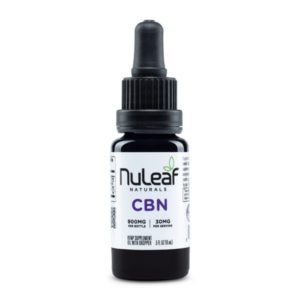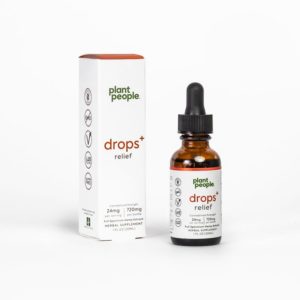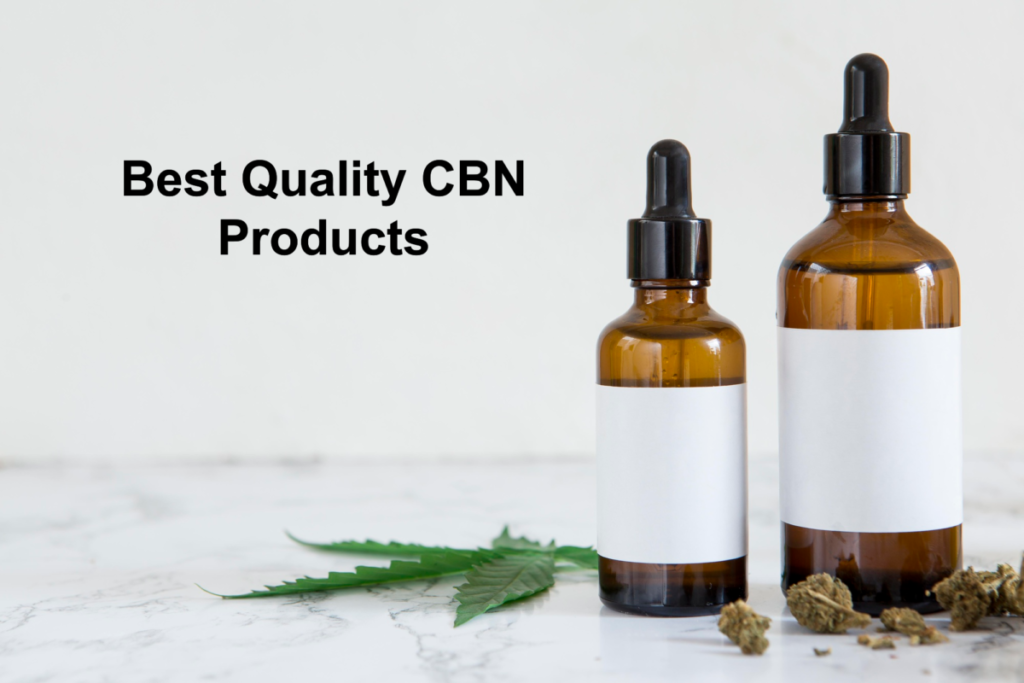CBN v/s CBG: Learn more about the difference
As the marijuana market expands year after year, more individuals get interested in the different impacts of various cannabinoids. Until now, CBD was the lone non-intoxicating cannabinoid available commercially. Nevertheless, it was not long before cannabigerol (CBG) also accompanied CBD. And then, shortly, items incorporating cannabinol (CBN) appeared.
Most individuals are aware these novel hemp chemicals are non-intoxicating. Unfortunately, that is the extent of their understanding. There is a lot of misunderstanding regarding these substances among some people.
This article will surely help you clarify some misapprehensions about two growingly popular cannabinoids: CBG (cannabigerol) v/s CBN (cannabinol). Here this article contains all the differences and similarities between CBN v/s CBG. Keep on reading to grasp more about CBN v/s CBG.
What Is CBN?
Nowadays, cannabis Sativa strains constitute a high amount of CBN v/s CBG. Unfortunately, the same does not go for CBN. However, CBN can get generated through a chemical reaction that converts CBD or THC to CBN.
Cannabinol (CBN) was studied almost as extensively as THC or CBD in the initial periods. But, as the years passed, demand for this non-intoxicating cannabinoid dwindled until the current CBD boom reignited it.
CBN offers several benefits that set it apart from other compounds. It is worth trying if you are into its medicinal benefits rather than the high effect.
What Is CBG?
CBG is perhaps the simplest cannabinoid to produce from CBGa (cannabigerolic acid). CBGa is known to be the stem cell of cannabinoids as it can be converted into CBD, CBC, or THC using enzymes.
CBGa becomes stable once it transforms into CBG. Thus, it will not undergo further conversion into THC or any other cannabinoid. Since CBG breeding is in its initial stage, the flower strains having CBG levels above 15% are unusual. However, this concentration is sufficient to get the potential benefits of CBG. CBG is non-psychoactive, and some hemp consumers claim it has similar effects to CBD.
CBN vs CBG: The main differences
Cannabis plants contain chemical substances called CBN and CBG. CBN is a derivative of oxidized THC, which is generally present in older cannabis plants. Both immature and mature cannabis plants produce CBG. CBG is derived from CBGA. When taken separately or combined, CBG and CBN do not provide a euphoric high, but they might have distinct impacts and perks.
- The molecular structures of CBN and CBG are different. CBN has a chemical structure comparable to THC, but CBG has structural similarities to CBD and CBC.
- Both CBN and CBG have direct interactions with the cannabinoid receptors present in our bodies. CBN binds more efficiently with the receptors than CBG as CBN has a fraction of the strength of THC at CB1.
- CBN and CBG, both independently and in combination, are perhaps highly beneficial for relieving pain and inflammation.
- CBN is particularly excellent for appetite stimulation and arthritis. On the other hand, CBG is highly helpful for eye health, glaucoma treatment, and anxiety (with CBD).
Is CBN stronger than CBG? Does it get you high?
CBN’s potency in comparison to CBG is unclear. When it comes to binding to cannabinoid receptors, CBN is around a tenth to a quarter of the power of THC, so it won’t make you feel euphoric. CBG does not have a euphoric effect.
What Are The Benefits Of CBG And CBN?
CBN has numerous advantages over CBG that set it apart from the hemp component. They are highly worth trying because of their health benefits. The following is a list of some of the advantages of both CBG and CBN:
Act As Sleeping Aid
CBN and CBG are not particularly good for sleeping on their own. Usually, CBN gets dealt with as a sedative that induces sleep, but it does not have any sleeping effects. However, it might enhance the sleeping effect of THC sleep aid if mixed with THC and other sleep-promoting terpenes, including myrcene, pinene, and linalool. CBG is also reported to help with sleep, but only after combination with other cannabinoids like CBD and THC. CBN is presumably a more suitable fit if you are searching for something to help you get to bed.
Help Relieve Anxiety And Other Related Ailments
CBG outperforms CBN in terms of anxiety and other related disorders, particularly when paired with CBD. There is still no evidence reported on CBN’s anti-anxiety properties.
CBG contains anti-anxiety properties and a muscle-relaxing impact. And both of these are somehow correlated to the nervous system. CBG ties to endocannabinoid receptors in the brain, which help to relieve anxiety and discomfort. CBG may increase the amount of dopamine in the body. Dopamine is a neurotransmitter that helps fight stress and anxiety. CBG also has a potent effect on alleviating ADHD symptoms and boosting concentration and focus.
Alleviate Chronic Pain
Either utilized separately or together, both CBN and CBG may act as efficient pain relievers and anti-inflammatories.
When combined with CBD, CBN acts as a stimulant on TRPV-2 receptors (activators). TRPV-2 activation results in the secretion of CGRP proteins, which are pain-relieving and pain-modulating neurotransmitters. These actions get mediated by CB1 receptors. When it comes to treating migraines and muscle stiffness, CBG outperforms CBN.
Act As a Potential Anti-bacterial
The possible antibacterial effects of CBG have been investigated in preliminary studies. Scientists believe that there is enough evidence to pursue additional research into this cannabinoid’s potential for treating bacterial infections.
CBN, like CBG, has gotten studied for its antibacterial properties. According to a 2008 study, CBN was found to kill specific strains of MRSA germs. Unfortunately, no later study has confirmed these findings. Both CBG and CBN have different response patterns.
CBN V/S CBG: Are They Legal?
Because of their sources, CBN v/s CBG is subject to quite different regulations.
Hemp can also get used to making CBN lawfully. Make sure you order from firms that only use CBN extracted from hemp. Some businesses produce CBN by subjecting THC to ultraviolet light. These items get classified as “marijuana-derived.” Marijuana-based products are prohibited both federally and in most states.
Since CBG gets derived from immature hemp plants, it is lawful on the federal level and in most states. Commercial hemp production and distribution, and all hemp-based goods, are now legal under the 2018 Farm Bill. Cannabis substances with a THC content of less than 0.3 percent by weight are legal. Therefore, CBG generated from the hemp plant is legal in some states.
How Can You Consume CBG or CBN?
CBG is available in numerous forms and can be taken orally and topically. You can purchase it online or at any legal drugstore. It’s also present in pot dispensaries that operate legally.
You can consume CBG as:
- Gummies
- Edibles
- Oils
- Pills
- Tinctures
- Patches
- Vape pens
- Creams
- Lotions
CBN is not as widely accessible, but it is available in forms like:
- Oils
- Capsule
- Tinctures
- Teabags
- Disposable vape pens
- CBN isolate
CBN v/s CBG: Which is better?
Both CBG and CBN are equivalently beneficial. Their significance is determined by how you intend to use them.
CBG is an excellent cannabinoid for a variety of health and wellness advantages. It excels as an efficient anti-anxiety medication when coupled with CBN and CBD. On the other hand, CBN might act as an excellent asset to your fitness & well-being regimen. And, also when combined with CBG, CBD, and other cannabinoids, it helps treat pain and swelling.
If you wish to consume CBD and CBG jointly, several hemp-derived products combine these two in oil or pill form.
Interesting Reads:






